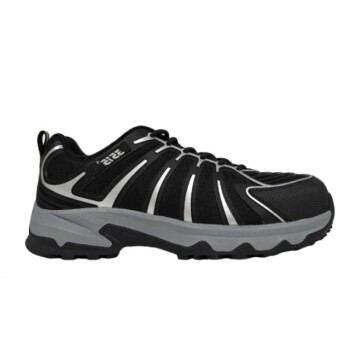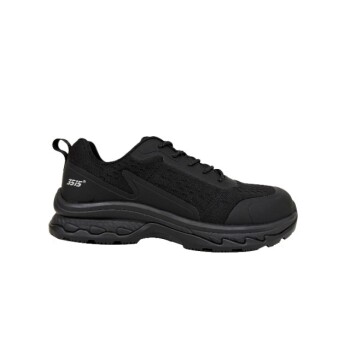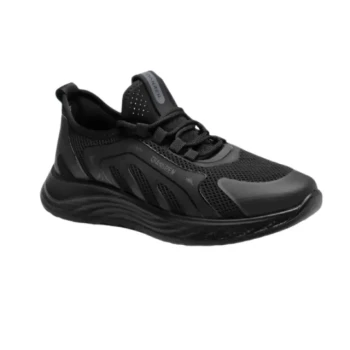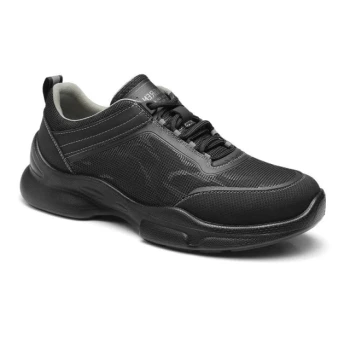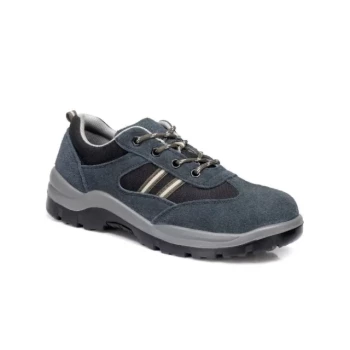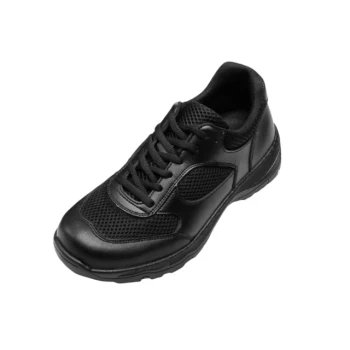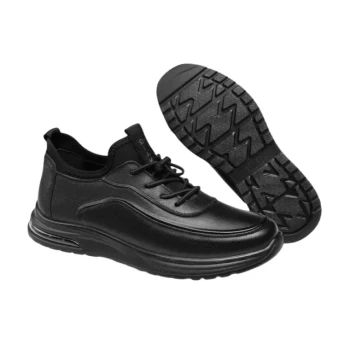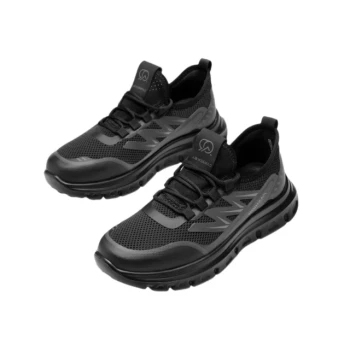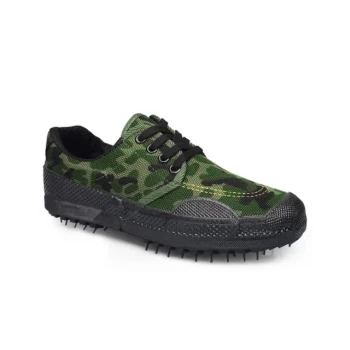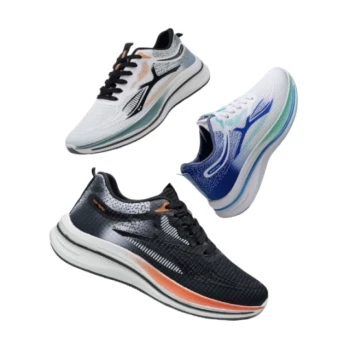Scuffing the outsoles of your shoes improves traction by using abrasion to create a rougher, more textured surface. A brand-new, smooth sole has minimal surface area to grip the ground, making it slippery. By scuffing it, you create thousands of microscopic peaks and valleys that increase the effective surface area and provide edges to bite into the walking surface.
The core problem with slippery new shoes is a lack of friction. By intentionally abrading the outsole, you are artificially "breaking in" the shoe, creating the texture needed to increase its coefficient of friction and prevent dangerous slips.
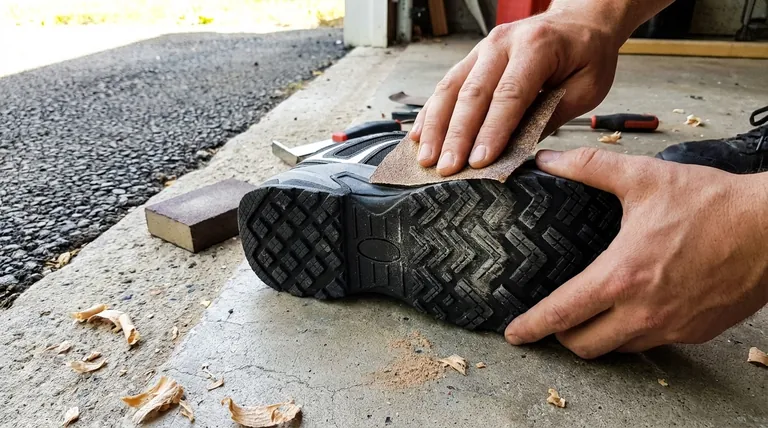
The Science of Friction: Why Smooth Soles Slip
The Problem with Smooth Surfaces
On a microscopic level, friction is generated by the imperfections of two surfaces interlocking and resisting movement against each other.
A brand-new, perfectly smooth shoe outsole has very few of these imperfections. This minimizes its ability to create a strong frictional force, especially against other smooth surfaces like tile, polished concrete, or wood floors.
The Role of Contact Area
While it may seem counterintuitive, a smoother sole has less effective contact area with the ground. Only the highest microscopic points make contact.
This minimal contact is why a new leather-soled dress shoe can feel like an ice skate on a slick floor. There is simply not enough grip being generated.
The Factory Finish
Manufacturers often apply a release agent or a finishing coat to outsoles during production. This residue can further reduce the natural coefficient of friction, making the shoes exceptionally slick straight out of the box.
How Scuffing Creates Grip
Increasing Microscopic Texture
The primary goal of scuffing is to introduce texture where none exists. Using an abrasive material like sandpaper or a nail file carves tiny grooves and scratches into the sole's surface.
These new textures dramatically increase the number of contact points between your shoe and the ground, which directly increases the force of friction.
Creating "Biting" Edges
Each scratch and groove creates a tiny, sharp edge. These micro-edges act like the tread on a tire, providing mechanical grip by biting into the microscopic imperfections of the floor.
This is why the method is so effective on hard, smooth floors—the newly created edges have something to lock onto.
Targeting Key Pressure Zones
For maximum effect, scuffing should be focused on the parts of the shoe that bear the most weight and have the most ground contact.
This is almost always the ball of the foot and the heel. Concentrating your effort here provides the most significant improvement in stability with the least amount of work.
Understanding the Trade-offs
Accelerated Wear and Tear
It is important to recognize that scuffing is, by definition, controlled damage. You are intentionally wearing away the material of the outsole.
While effective, this will shorten the overall lifespan of the sole compared to a natural break-in process. Be gentle and methodical to avoid removing too much material.
This Is Not a Universal Fix
Scuffing is most effective for shoes with smooth, hard outsoles, such as leather dress shoes or hard rubber soles.
It provides little to no benefit for shoes that already have a deep, aggressive tread pattern, like hiking boots or trail runners, as their traction comes from a completely different design principle.
Natural vs. Artificial Abrasion
Simply walking on rough surfaces like concrete, asphalt, or gravel will achieve the same result over time. This natural method is gentler on the shoe but requires more patience.
Artificial scuffing with sandpaper is simply a way to accelerate this "break-in" period for immediate safety and grip.
How to Apply This to Your Shoes
Scuffing your soles is a simple and effective solution, but the right approach depends on your specific goal.
- If your primary focus is making new dress shoes immediately safe: Use medium-grit sandpaper (around 100-grit) to gently scuff the ball and heel until the glossy finish is gone.
- If your primary focus is preserving the lifespan of your shoes: Opt for the natural method by wearing them for short walks on a rough sidewalk or unpaved path.
- If your primary focus is a temporary, non-damaging fix: Consider using adhesive grip pads, which stick to the outsole to provide instant texture without altering the shoe.
By understanding the simple physics of friction, you can confidently take control and make any new pair of shoes safe and ready to wear.
Summary Table:
| Shoe Type | Traction Benefit from Scuffing | Recommended Method |
|---|---|---|
| Dress Shoes (Smooth Leather/Rubber) | High - Removes slick factory finish | Light sanding (100-grit) on heel and ball |
| Casual Shoes (Hard Rubber) | Moderate - Increases micro-texture | Sandpaper or walking on rough pavement |
| Hiking/Trail Shoes (Aggressive Tread) | Low - Traction comes from deep lugs | Not recommended; focus on tread cleaning |
Need safe, reliable footwear with superior out-of-the-box traction? As a large-scale manufacturer, 3515 produces a comprehensive range of footwear for distributors, brand owners, and bulk clients. Our production capabilities encompass all types of shoes and boots, designed with safety and performance in mind. Contact us today to discuss your footwear needs and benefit from our expertise in creating durable, high-traction solutions.
Visual Guide
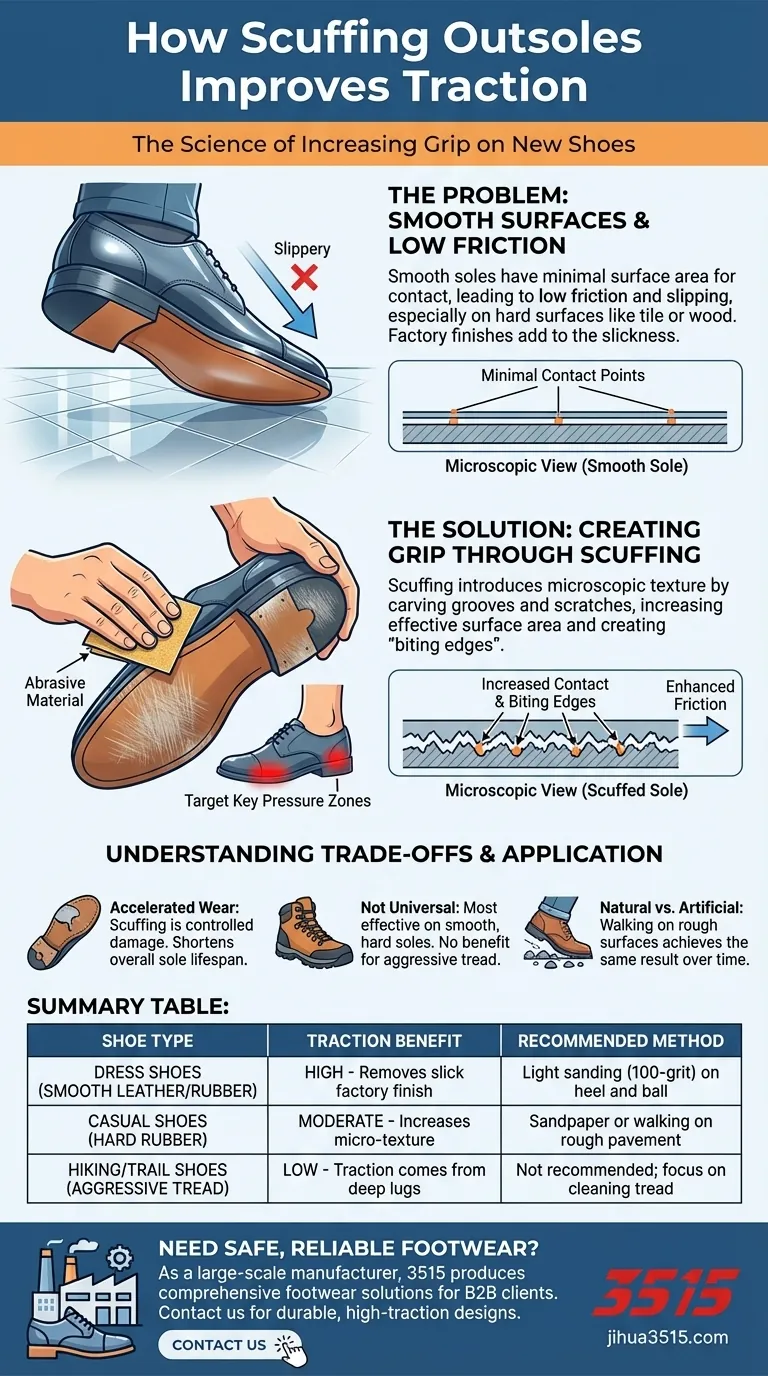
Related Products
- Premium KPU Athletic Safety Shoes for Wholesale
- Durable Rubber-Soled Utility Shoes for Wholesale & Custom Brand Manufacturing
- Premium Lightweight Safety Shoes for Wholesale & Bulk Orders
- Wholesale Breathable & Cushioned Training Shoes Custom Factory Production
- Wholesale Breathable Training Shoes Custom Athletic Footwear Manufacturer
People Also Ask
- How is puncture resistance evaluated in footwear soles? Balance Protection, Comfort & Safety
- Why is slip resistance important in safety footwear? Prevent Costly Workplace Slips and Falls
- What do the markings on ASTM-compliant safety shoes indicate? Decode the Safety Labels for Maximum Protection
- What are the EN ISO 20345 norms for safety shoes? A Guide to Choosing the Right Protection
- What materials are used in the construction of these boots? A Guide to Velour Leather, Textile & PU Soles
